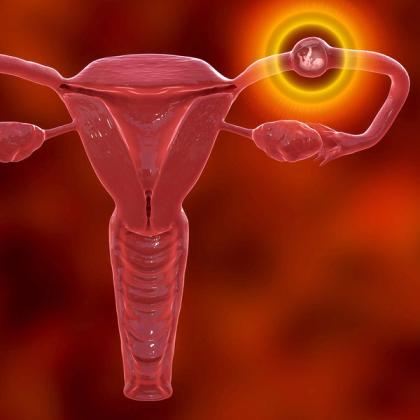This podcast episode is worth 0.28 CPD credits. Upgrade to Pro
In the UK, ectopic pregnancy is diagnosed in approximately 11 out of every 1,000 pregnancies and typically presents 6–8 weeks after the last normal menstrual period but can be earlier or later. The risk of ectopic pregnancy increases with prior ectopic pregnancy, tubal surgery, history of sexually transmitted infections, smoking, in vitro fertilisation or if the woman is pregnant despite intrauterine device usage. Classical symptoms and signs of ectopic pregnancy are pain, vaginal bleeding and amenorrhoea. Haemodynamic instability and cervical motion tenderness may indicate rupture or imminent rupture of an ectopic pregnancy. In this episode, Dr Roger Henderson gives an overview of how to accurately diagnose an ectopic pregnancy, the management pathway involved and the risks of recurrence.
Key take-home points
- In the UK, ectopic pregnancy is diagnosed in roughly 11 out of every 1,000 pregnancies.
- Around 97% of these pregnancies are located in the tubal regions, with the majority of these in the ampulla.
- Ectopic pregnancy leads to maternal death in approximately 0.2% of cases.
- More than half of diagnosed ectopic pregnancies are not associated with any known risk factors.
- Any sexually active woman presenting with abdominal pain and vaginal bleeding after an interval of amenorrhoea has an ectopic pregnancy until proved otherwise.
- Symptoms generally appear 6–8 weeks after the last normal menstrual period, but they can occur much later in cases of non-tubal ectopic pregnancy.
- Common warning signs include pelvic pain, a missed period and irregular vaginal bleeding.
- Physical findings can include pelvic or adnexal tenderness, though an internal pelvic examination may often be avoided in suspected cases due to the risk of provoking a rupture.
- Accurate diagnosis depends on clinical assessment, hormone testing and imaging, and a pregnancy test must be done by either urine or serum human chorionic gonadotropin (hCG) testing in any woman of childbearing age who presents with abdominal pain.
- Transvaginal ultrasound remains the gold standard for identifying the pregnancy's location and assessing for embryonic development.
- If a pregnancy cannot be definitively located on ultrasound but clinical suspicion remains, serial hCG measurements over a 48-hour period are useful.
- A serum progesterone level is not useful in identifying ectopic pregnancy.
- Expectant management is an option when a decreasing hCG level is initially <1500 IU/L. Among women with an initial hCG <200 IU/L, over 80% will have spontaneous resolution.
- Medical management using methotrexate is effective in many early cases.
- Surgical treatment is reserved for women with significant symptoms, large ectopic masses, high hCG readings or signs of internal bleeding.
- Following medical or surgical treatment, all women should be reviewed weekly and serial hCG levels taken until these are <10 IU/L.
- The rate of recurrent ectopic pregnancy is 5–20% but rises to 30% in women with two consecutive ectopic pregnancies.
Key references
- NICE. 2023. https://www.nice.org.uk/guidance/ng126.
- RCOG. 2022. https://www.rcog.org.uk/guidance/browse-all-guidance/green-top-guidelines/diagnosis-and-management-of-ectopic-pregnancy-green-top-guideline-no-21/.
- Marion LL, Meeks GR. Clin Obstet Gynecol. 2012;55(2):376-386. doi: 10.1097/GRF.0b013e3182516d7b.
- Santos-Ribeiro S, et al. Hum Reprod. 2016 Feb;31(2):393-402. doi: 10.1093/humrep/dev315.
- Kirk E, et al. Hum Reprod Update. 2014;20(2):250-61. doi: 10.1093/humupd/dmt047.
Create an account to add page annotations
Annotations allow you to add information to this page that would be handy to have on hand during a consultation. E.g. a website or number. This information will always show when you visit this page.
